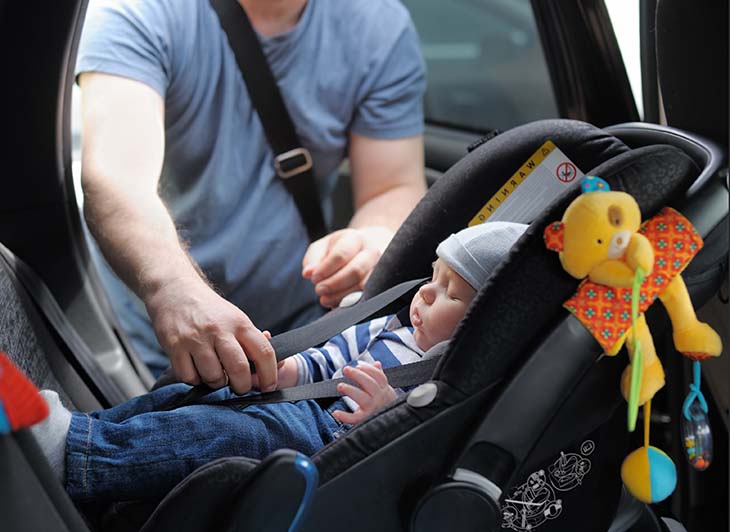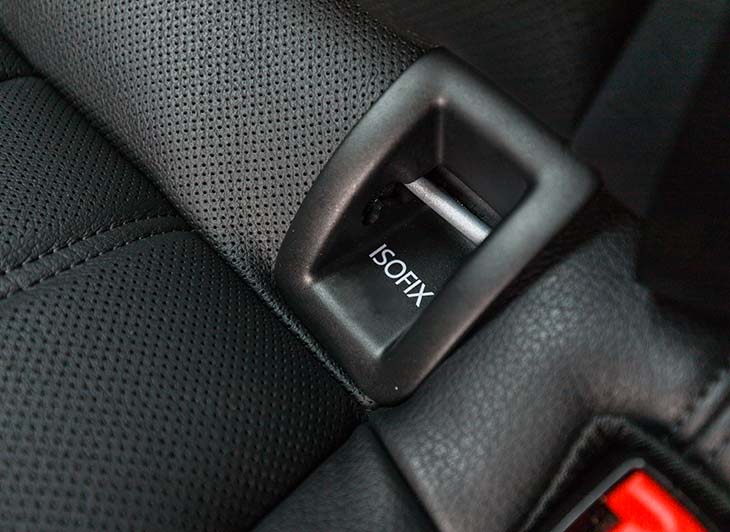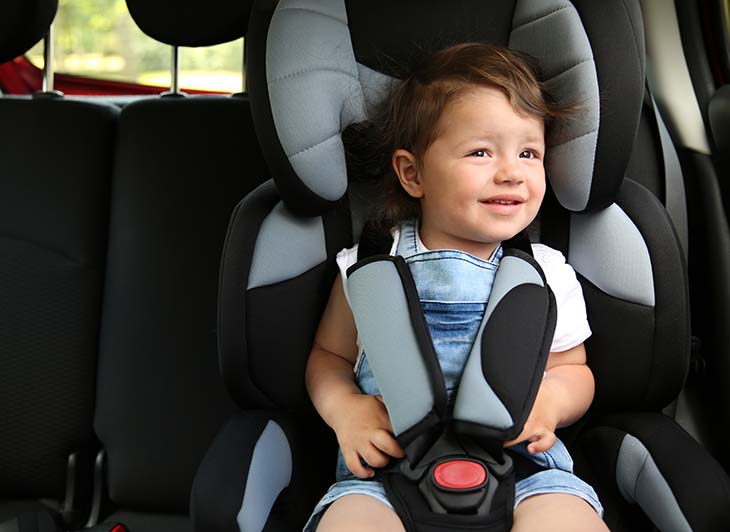Having a baby on the way can be one of the most exciting, nerve-wracking times of your life. Whether it’s your first or your fourth, the prospect of a little one to care for means you will need to take a look at how you live your life, and likely make a few adjustments.
One of the most important safety precautions you need to consider, is your car. What might have been okay when it was just you and your partner using it, can be very different when it comes to transporting a baby.
Even when they get a bit older, there are still many considerations you need to take onboard. And number one is the car seat.
But knowing what you must and must not do with a car seat can be difficult, especially if you are a new parent. So to make things easier, we’ve put together this guide to tell you all you need to know about car seats.
What’s the law?
The UK law is actually pretty straightforward when it comes to child seats. It states a child must use a car seat or booster seat until they are at least twelve years old or over 135 centimetres tall, whichever comes first.
Height-based car seats

When you first start using your car with a newborn or very young baby, you could be using what’s known as a ‘height-based seat’ or ‘i-size’.
These ones must face backwards, as opposed to looking in the direction the car is travelling. Your child must use this type of car seat in this rear-facing position until they are at least 15 months old. When they reach this age, you can adapt this seat to face forward.
At the moment, the law states that you must use a car seat that has been approved by the EU regulator.
You can identify a car seat that qualifies for this by looking for an ‘E’ in a circle and the code ‘R129’. This will be written on the seat’s accompanying details and also on the car seat itself.
Weight-based seats
Some car seats work based on your child’s weight. How they operate depends more on the weight of your child than their age, and many of this type of car seat can be adapted into different variations.
The regulations on this type of car seat all depend on the weight of your child. They are divided into different groups.
Group 0 covers very young children from 0 to 10kg. These are often lie-flat ‘lateral’ baby carrier style car seats that you can lift in and out of a car. They are often rear-facing. There is also a Group 0+ that has babies up to 13kg, and cover lie-flat seats using a harness, again facing backwards.
Group 1 covers children from 9kg to 18kg. These seats can be rear-facing or forward-facing, and some of this type of seat come with what’s known as a safety shield. These shields go across the chest of the child and act as extra protection should there be an impact, almost working as a specially designed air bag.
Group 2 is for children from 15kg to 25kg. These have many of the same seats as Group 1, but also covers high-backed booster seats and booster cushions that require a seatbelt.
Group 3 is much the same as Groups 1 and 2, except they are designed for children who weigh between 22kg to 36kg.
As with height-based seats, you should look for the EU regulation, which is marked by an ‘E’ and the code ‘ECE R44’.
Fitting your car seat

Car seats are secured in your car in one of two ways: by using the car’s seatbelt, or by using ISOFIX points to attach the seat to your car.
Not all cars have ISOFIX points, as they are a relatively recent innovation. It is the international standard which attachments for car seats into cars are judged by. This type of attachment has been standardised across the majority of the motor industry, with car companies having the same type of attachment fitting in their cars, so you can be sure that if a car seat has the ISOFIX point, it is guaranteed to fit your car.
Car seats attached by seatbelt are rarer these days but are still effective. When you choose one of these types of car seats, make sure you check the requirements carefully to ensure that it fits the set-up in your car.
Other things to consider
Aside from the legal requirements, you should consider getting a car seat that allows you to adapt it to different stages of your new child’s life.
Not only is this more cost effective when it comes to adapting your vehicle to how your child develops, but by having more variations available, you can keep your child comfortable by adjusting to match what fits them best.
If your car does not have ISOFIX points, you may want to consider upgrading to a vehicle that does. These attachments have been designed with safety in mind and are often a factor in how a car’s potential safety is assessed. While you can find decent car seats that are attached solely through a seat belt, they don’t offer the same security as ISOFIX points.
And if you are considering a change of car, you should look at the Euro NCAP scores when deciding. This European agency assesses a car’s safety based on a number of different factors. From driver and passenger safety, and also child passenger safety.
You should also look at other safety features that have become more prevalent in modern cars, like automatic-braking or blindspot detection. The more safety features you have, the better protection you will have for you, and your child.





 Facebook
Facebook Twitter
Twitter Instagram
Instagram LinkedIn
LinkedIn Youtube
Youtube